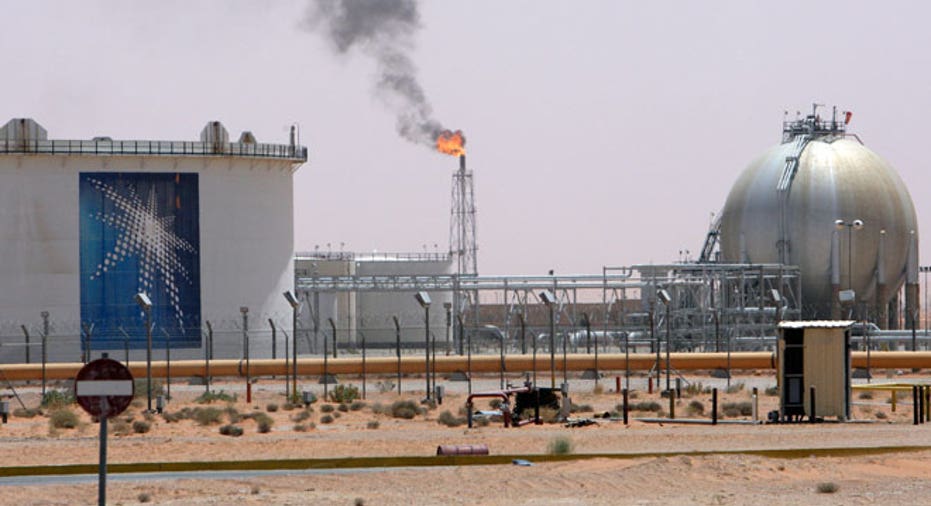As Oil Continues Freefall, Will OPEC Blink?

OPEC has, so far, held its ground during a steep drop in global oil prices. But with crude now hitting six-year lows, industry watchers are wondering if the oil cartel may finally blink.
In November, the Organization of the Petroleum Exporting Countries opted to maintain its production levels. The announcement was somewhat unexpected. OPEC traditionally closes the spigot to boost oil prices.
Saudi Arabia, the world’s largest exporter of crude, actually cut its prices for U.S. buyers late in 2014 in an effort to maintain its market share.
Oil prices have accelerated their freefall since then. U.S. futures skipped past the $40-a-barrel milestone late last week, fueled by a supply glut and questions over demand for oil.
Still, it remains to be seen if OPEC will backtrack.
“It’s not extremely high, but the potential for some kind of supply cut from OPEC or other countries like Russia is certainly higher than it was two weeks ago,” said Tony Starkey, Bentek Energy’s manager of energy analysis, adding that OPEC has lost much of its influence on the global market.
OPEC was betting that U.S. producers would be the first to buckle in the face of cheap oil. Domestic drilling has slowed, and more cuts could be coming. However, oil supplies continue to outstrip demand. The combination of strong production and soft demand has pushed U.S. oil prices more than 60% lower since their high mark in 2014.
And now a global market selloff is in the mix.
In the U.S., equities were wading through rough waters again Monday. The Dow was down 1,089 points at one point, a record drop for the blue-chip index, before paring most of those losses. Investors were simultaneously retreating from oil because of the possibility that demand could suffer in China, whose stock markets recently posted their steepest plunge since the 2008 financial crisis.
West Texas Intermediate oil slipped $2.21, or 5.5%, to $38.24 a barrel. Brent crude, the international benchmark, traded 6% lower at $42.69 a barrel.
“Supplies are large, and that’s in the market already. The selloff right now has more to do with China’s economy,” said Darin Newsom, a senior analyst at DTN.
Eyes on Saudi Arabia
OPEC reiterated its production plan in June, when Brent crude was still above $60 a barrel. The prolonged selloff, which has brought Nymex oil futures to their lowest level since February 2009, could push OPEC to reconsider at the group’s next meeting in December.
“It’s certainly something we have to keep an eye on,” Newsom said. “One of the things that may have to happen in this situation is to see market fundamentals change in crude oil. That may mean action by OPEC. A selloff like today, with Brent crude hitting new multi-year lows, may be setting the stage for something along those lines.”
Oil observers believe Saudi Arabia had to convince fellow members to stay on course, so OPEC nations may have cold feet as it is. Depressed oil prices are creating fiscal issues for cash-strapped OPEC producers.
The equation is changing for Saudi Arabia, too. On Monday, Fitch lowered its outlook for the country’s sovereign debt to negative as Saudi Arabia comes close to running its first budget deficit since 1998.
In a recent note to clients, analysts at RBC Capital Markets noted how OPEC energy ministers expressed optimism in June that oil’s future looked bright. OPEC’s positivity was based on an outlook for greater demand that would support Brent prices in the mid-$70 range by 2016.
“That reset looks increasingly imperiled” given the oversupplied market and record-level exports from key producers, according to RBC.
U.S. Oil Under Pressure
As for American producers, oil below $40 a barrel makes drilling more difficult to maintain at a profitable level.
“The startup business we’ve seen over last five or six years produces at a higher cost than that,” Newsom said.
Energy firms, especially those involved in the expensive process of drilling for shale oil, have made cuts in the U.S. and abroad. According to Houston-based consulting firm Graves, the industry has eliminated more than 150,000 jobs led by cuts at service providers like Halliburton (NYSE:HAL) and Schlumberger (NYSE:SLB).
The decline in drilling activity has led to some pulling back in supplies, Newsom added, but it is “nothing that’s going to change the market anytime soon.”
Starkey said further consolidation and bankruptcies in the U.S. oil industry can be expected through the end of this year, barring an unforeseen rebound in oil prices.
“It’s important to remember that we have a wide array of companies producing in the U.S. Many companies are hanging in there, but there’s definitely a segment of the [exploration and production] industry that’s not going to survive these price levels,” he explained.



















